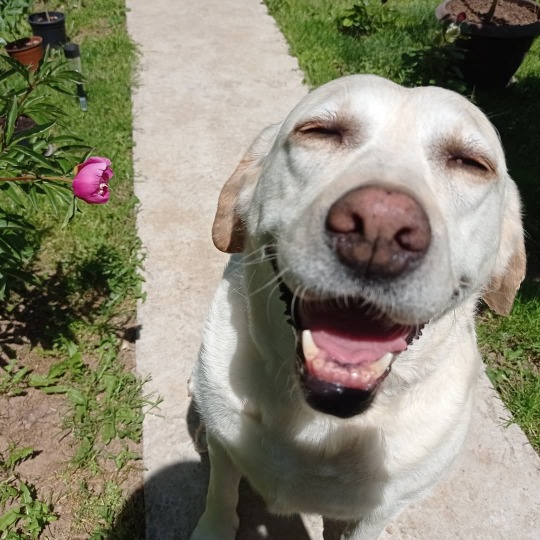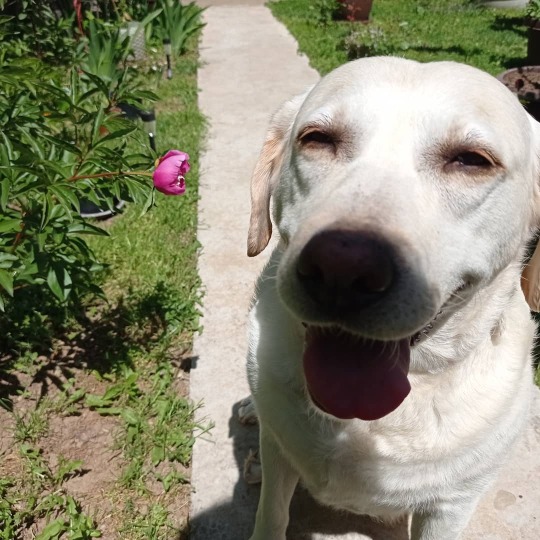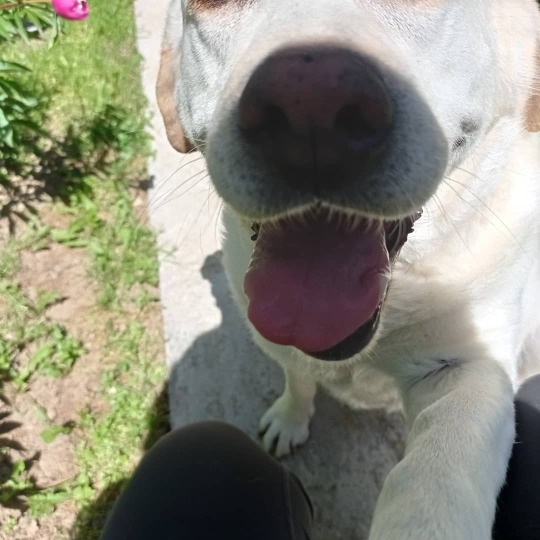Text
Allergy Season Explained
Happy First Day of Spring, Tumblr!
What better way to celebrate than to **ACHOO!!**….wait, what were we saying?
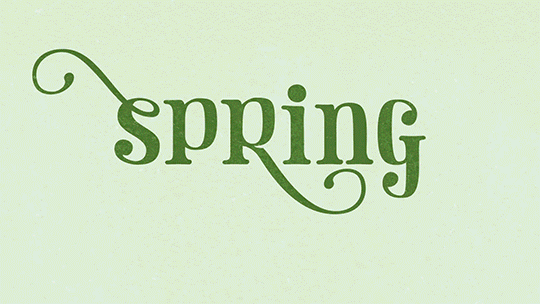
Ah, spring! Grass growing, flowers blooming, trees growing new leaves, but if you get allergies, this explosion of new life probably inspires more dread than joy.
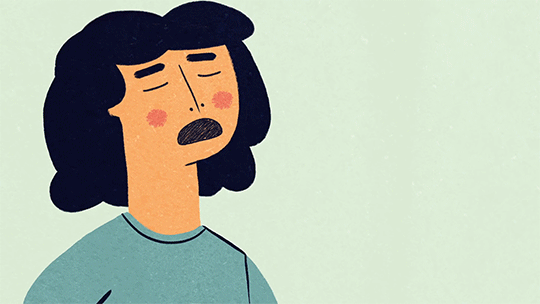
Step outside, and within minutes, you’re sneezing and congested. Your nose is running, your eyes are swollen and watery, your throat is itchy. For you and millions of others, it’s seasonal allergy time. So what’s behind this onslaught of mucus?

The answer lies within you. It’s your immune system. Seasonal allergies, also called hay fever, or allergic rhinitis, are a hypersensitive immune response to something that’s not actually harmful. Pollen from trees and grass, and mold spores from tiny fungi find their way into your mucous membranes and your body attacks these innocuous travelers the same way it would infectious bacteria.
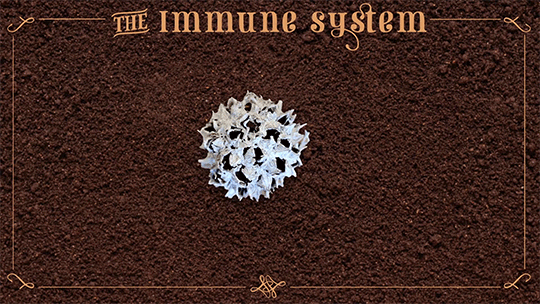
The immune system has a memory. When a foreign substance gets tagged as threatening, white blood cells produce customized antibodies that will recognize the offender the next time around. They then promptly recruit the body’s defense team. But sometimes, the immune system accidentally discriminates against harmless substances, like pollen. When it wafts in again, antibodies on the surface of white blood cells recognize it and latch on.

This triggers the cell to release inflammatory chemicals, like histamine, which stimulate nerve cells, and cause blood vessels in the mucous membranes to swell and leak fluid. In other words, itchiness, sneezing, congestion, and a runny nose.

Allergies usually, but not always, show up for the first time during childhood. But why do some people get allergies and others don’t? Allergies tend to run in families, so genetics may be one culprit. In fact, errors in a gene that helps regulate the immune system are associated with higher rates of allergies. The environment you grow up in matters, too. Being exposed to an allergen as a baby makes you less likely to actually develop an allergy to it. People who grow up on farms, in big families, and in the developing world also tend to have fewer allergies, although there are plenty of exceptions, partly thanks to genetics. One theory is that as children, they encounter more of the microbes and parasites that co-evolved with traditional hunter-gatherer societies.

Called the hygiene hypothesis, the idea is that when the immune system isn’t exposed to the familiar cast of microbes, it’ll keep itself busy mounting defenses against harmless substances, like pollen. Another theory is that an immune system toughened up by a barrage of pathogens is less likely to overreact to allergens. Pollen is a common offender, just because we encounter so much of it, but there’s a long list of substances: dust, animal dander, insect venom, medications, certain foods, that can send your immune system into overdrive. Some of these reactions can be scary. An allergy can develop into full-blown anaphylaxis, which typically brings on severe swelling, shortness of breath, and very low blood pressure. It can be deadly.
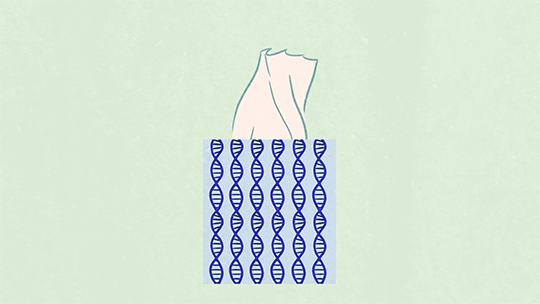
But as we who suffer from seasonal allergies know, even non-life threatening allergy symptoms can make you miserable. So what can you do about it? Medications can help reduce the symptoms. The most common ones keep histamines from binding to your cells. These antihistamines stop the inflammation response. Steroids can help dial down the immune system. Another more permanent option is immunotherapy. Deliberate, controlled exposure to gradually increasing amounts of an allergen can teach the immune system that it isn’t dangerous after all.

Of course, you can always just wait your seasonal allergies out. The spring pollen onslaught dwindles by mid-summer…just in time for ragweed season!
From the TED-Ed Lesson Why do people have seasonal allergies? - Eleanor Nelsen
Animation by TED-Ed
722 notes
·
View notes
Text
How do vaccines work?

Using the same principles that the body uses to defend itself, scientists use vaccines to trigger the body’s adaptive immune system, without exposing humans to the full strength disease. This has resulted in many vaccines, which each work uniquely, separated into many different types.

First, we have live attenuated vaccines. These are made of the pathogen itself, but a much weaker and tamer version.

Next, we have inactive vaccines, in which the pathogens have been killed. The weakening and inactivation in both types of vaccine ensures that pathogens don’t develop into the full-blown disease. But just like a disease, they trigger an immune response, teaching the body to recognize and attack by making a profile of pathogens in preparation.

Another type, the subunit vaccine, is only made from one part of the pathogen, called an antigen, the ingredient that actually triggers the immune response. By even further isolating specific components of antigens, like proteins or polysaccharides, these vaccines can prompt specific responses.

Scientists are now building a whole new range of vaccines called DNA vaccines. For this variety, they isolate the very genes that make the specific antigens the body needs to trigger its immune response to specific pathogens. When injected into the human body, those genes instruct cells in the body to make the antigens. This causes a stronger immune response and prepares the body for any future threats, and because the vaccine only includes specific genetic material, it doesn’t include any other ingredients from the rest of the pathogen.
If these vaccines become a success, we might be able to build more effective treatments for invasive pathogens in years to come.
To learn more about the body’s adaptive immune system and how vaccines work, watch the TED-Ed Lesson How do vaccines work? - Kelwalin Dhanasarnsombut
Animation by Cinematic
1K notes
·
View notes
Photo

I believe in free education, one that’s available to everyone; no matter their race, gender, age, wealth, etc… This masterpost was created for every knowledge hungry individual out there. I hope it will serve you well. Enjoy!
FREE ONLINE COURSES (here are listed websites that provide huge variety of courses)
Alison
Coursera
FutureLearn
open2study
Khan Academy
edX
P2P U
Academic Earth
iversity
Stanford Online
MIT Open Courseware
Open Yale Courses
BBC Learning
OpenLearn
Carnegie Mellon University OLI
University of Reddit
Saylor
IDEAS, INSPIRATION & NEWS (websites which deliver educational content meant to entertain you and stimulate your brain)
TED
FORA
Big Think
99u
BBC Future
Seriously Amazing
How Stuff Works
Discovery News
National Geographic
Science News
Popular Science
IFLScience
YouTube Edu
NewScientist
DIY & HOW-TO’S (Don’t know how to do that? Want to learn how to do it yourself? Here are some great websites.)
wikiHow
Wonder How To
instructables
eHow
Howcast
MAKE
Do it yourself
FREE TEXTBOOKS & E-BOOKS
OpenStax CNX
Open Textbooks
Bookboon
Textbook Revolution
E-books Directory
FullBooks
Books Should Be Free
Classic Reader
Read Print
Project Gutenberg
AudioBooks For Free
LibriVox
Poem Hunter
Bartleby
MIT Classics
Many Books
Open Textbooks BCcampus
Open Textbook Library
WikiBooks
SCIENTIFIC ARTICLES & JOURNALS
Directory of Open Access Journals
Scitable
PLOS
Wiley Open Access
Springer Open
Oxford Open
Elsevier Open Access
ArXiv
Open Access Library
LEARN:
1. LANGUAGES
Duolingo
BBC Languages
Learn A Language
101languages
Memrise
Livemocha
Foreign Services Institute
My Languages
Surface Languages
Lingualia
OmniGlot
OpenCulture’s Language links
2. COMPUTER SCIENCE & PROGRAMMING
Codecademy
Programmr
GA Dash
CodeHS
w3schools
Code Avengers
Codelearn
The Code Player
Code School
Code.org
Programming Motherf*?$%#
Bento
Bucky’s room
WiBit
Learn Code the Hard Way
Mozilla Developer Network
Microsoft Virtual Academy
3. YOGA & MEDITATION
Learning Yoga
Learn Meditation
Yome
Free Meditation
Online Meditation
Do Yoga With Me
Yoga Learning Center
4. PHOTOGRAPHY & FILMMAKING
Exposure Guide
The Bastards Book of Photography
Cambridge in Color
Best Photo Lessons
Photography Course
Production Now
nyvs
Learn About Film
Film School Online
5. DRAWING & PAINTING
Enliighten
Ctrl+Paint
ArtGraphica
Google Cultural Institute
Drawspace
DragoArt
WetCanvas
6. INSTRUMENTS & MUSIC THEORY
Music Theory
Teoria
Music Theory Videos
Furmanczyk Academy of Music
Dave Conservatoire
Petrucci Music Library
Justin Guitar
Guitar Lessons
Piano Lessons
Zebra Keys
Play Bass Now
7. OTHER UNCATEGORIZED SKILLS
Investopedia
The Chess Website
Chesscademy
Chess.com
Spreeder
ReadSpeeder
First Aid for Free
First Aid Web
NHS Choices
Wolfram Demonstrations Project
Please feel free to add more learning focused websites.
*There are a lot more learning websites out there, but I picked the ones that are, as far as I’m aware, completely free and in my opinion the best/ most useful.
532K notes
·
View notes
Photo

Mouse study finds link between gut bacteria and neurogenesis
Antibiotics strong enough to kill off gut bacteria can also stop the growth of new brain cells in the hippocampus, a section of the brain associated with memory, reports a study in mice published May 19 in Cell Reports. Researchers also uncovered a clue to why– a type of white blood cell seems to act as a communicator between the brain, the immune system, and the gut.
“We found prolonged antibiotic treatment might impact brain function,” says senior author Susanne Asu Wolf of the Max-Delbrueck-Center for Molecular Medicine in Berlin, Germany. “But probiotics and exercise can balance brain plasticity and should be considered as a real treatment option.”
Wolf first saw clues that the immune system could influence the health and growth of brain cells through research into T cells nearly 10 years ago. But there were few studies that found a link from the brain to the immune system and back to the gut.
In the new study, the researchers gave a group of mice enough antibiotics for them to become nearly free of intestinal microbes. Compared to untreated mice, the mice who lost their healthy gut bacteria performed worse in memory tests and showed a loss of neurogenesis (new brain cells) in a section of their hippocampus that typically produces new brain cells throughout an individual’s lifetime. At the same time that the mice experienced memory and neurogenesis loss, the research team detected a lower level of white blood cells (specifically monocytes) marked with Ly6Chi in the brain, blood, and bone marrow. So researchers tested whether it was indeed the Ly6Chi monocytes behind the changes in neurogenesis and memory.
In another experiment, the research team compared untreated mice to mice that had healthy gut bacteria levels but low levels of Ly6Chi either due to genetics or due to treatment with antibodies that target Ly6Chi cells. In both cases, mice with low Ly6Chi levels showed the same memory and neurogenesis deficits as mice in the other experiment who had lost gut bacteria. Furthermore, if the researchers replaced the Ly6Chi levels in mice treated with antibiotics, then memory and neurogenesis improved.
“For us it was impressive to find these Ly6Chi cells that travel from the periphery to the brain, and if there’s something wrong in the microbiome, Ly6Chi acts as a communicating cell,” says Wolf.
Luckily, the adverse side effects of the antibiotics could be reversed. Mice who received probiotics or who exercised on a wheel after receiving antibiotics regained memory and neurogenesis. “The magnitude of the action of probiotics on Ly6Chi cells, neurogenesis, and cognition impressed me,” she says.
But one result in the experiment raised more questions about the gut’s bacteria and the link between Ly6Chi and the brain. While probiotics helped the mice regain memory, fecal transplants to restore a healthy gut bacteria did not have an effect.
“It was surprising that the normal fecal transplant recovered the broad gut bacteria, but did not recover neurogenesis,” says Wolf. “This might be a hint towards direct effects of antibiotics on neurogenesis without using the detour through the gut. To decipher this we might treat germ free mice without gut flora with antibiotics and see what is different.”
In the future, researchers also hope to see more clinical trials investigating whether probiotic treatments will improve symptoms in patients with neurodegenerative and psychiatric disorders.“We could measure the outcome in mood, psychiatric symptoms, microbiome composition and immune cell function before and after probiotic treatment,” says Wolf.
179 notes
·
View notes
Photo

Hi all! Grace here.
I am not yet studying Anatomy and probably won’t until next year, but I decided to look up sources relating to Anatomy and gather them here for future reference! I will be adding more to it as I find more. If you are currently studying Anatomy or already have, please let me know if there were sources you are using/did use that were/are helpful so I can add them! :)
Nurse Journal
Human Body Images
Gross Anatomy
E-Skeleton
Human Anatomy
Introduction to the Human Body
Digestive System: The Inside Story
Body Parts Game
The Immune System
Human Anatomy Learning Modules
The Respiratory System
Anatomy of the Eye
Digestive Disorders and Anatomy
Anatomy Flashcards
Human Anatomy and Physiology
Blood Type Lesson Plan
Introduction to Human Genetics
Anatomy of the Human Brain
Heart Anatomy
Anatomy of the Lungs
NYU Virtual Microscope
Muscle Quizzes
Parts of the Brain
Dermatology Glossary
Interactive Body Games
Anatomical Images
The Bone Box
Muscles of the Body
Anatomy and Physiology Course
Human Body Maps
The Digestive System
Interactive Case Studies
Online Biology Book
Radiographic Anatomy
Body Guide: Skin
Immunity Guide
Anatomy Self-Test
I hope this is helpful! x
8K notes
·
View notes
Photo
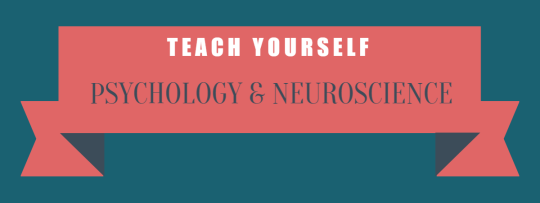
Since I get asked a lot about where to learn more about the human brain and behaviour, I’ve made a masterpost of books, websites, videos and online courses to introduce yourself to that piece of matter that sits between your ears.
Books
The Brain Book by Rita Carter
The Pyschology Book (a good starter book) by DK
Thinking, Fast and Slow by Daniel Kahneman
Quiet: The Power of Introverts in a World That Can’t Stop Talking by Susan Cain
The Man Who Mistook His Wife for a Hat by Oliver Sacks
The Brain: The Story of You by David Eagleman
The Brain That Changes Itself: Stories of Personal Triumph from the Frontiers of Brain Science by Norman Doidge
This Is Your Brain on Music by Daniel Levitin
The Autistic Brain by Richard Panek and Temple Grandin (highly reccomended)
Sapiens: A Brief History of Humankind by Yuval Noah Harari (not really brain-related, but it is single handedly the best book I have ever read)
Websites
@tobeagenius (shameless self-promotion)
How Stuff Works
Psych2Go
BrainFacts
Neuroscience for Kids (aimed at kids, but it has some good info)
New Scientist
National Geographic
Live Science
Videos & Youtube Channels
Mind Matters series by TedEd
Crash Course Psychology
SciShow Brain
Psych2Go TV
asapSCIENCE
Brain Craft
Its Okay To Be Smart
Online Courses
The Addicted Brain
Visual Perception and The Brain
Understanding the Brain: The Neurobiology of Everyday Life
Pyschology Of Popularity
Harvard Fundamentals Of Neuroscience
8K notes
·
View notes
Photo

Meet Sudan, the last male northern white rhino on Earth. We arrived at @olpejeta just before first light and this was the scene we saw as the sun came out and the clouds began to clear. We all stood in silence soaking up the beauty in front of us.//
Today is #worldrhinoday. Join us today as we celebrate these beautiful creatures and the work that’s being done to ensure they stay on this planet—photo by James Suter @jamessuter shot on assignment for @unitedforwildlife, a global alliance of 7 NGOs, including @nature_africa.
#africa #loveafrica #protectpreserve #wildlife #worldrhinoday2016 @worldrhinoday
365 notes
·
View notes
Photo

Disclaimer: These are online resources that I have found, They are not meant to be your only source of study, instead you can use them to your enhance your normal study. I don’t know what level these resources are aimed at, but I’ve tried to provide a range for a number of different topics.
The Body:
Teeth and Dentition
Take a look inside a cell (with some audio)
Explore human anatomy in 3D
Skeletal System
Muscular system
Cardiovascular system
Digestive system
Endocrine system
Nervous system
Immune/ Lymphatic system
Urinary system
Female reproductive system
Male reproductive system
What we didn’t know about penis anatomy - Ted Talks
Integumentary system
Sensory systems
3D Brain
Brain explorer program
How brains learn to see - Ted Talks
Body parts on a chip - Ted Talks
The real reason for brains - Ted Talks
A look inside the brain in real time - Ted Talks
Cells:
Amazing cells - inside a cell, how vesicles transport, communication during fight or flight, membranes.
Cell size and scale
The evolution of the cell
Interactive cell model
The inside story of cell communication
Stem cells - cell differentiation, stem cells in use, potential use, stem cell debate.
Cloning
Animals and Plants:
Interactive tree of life
Buds and Twigs (Background article: Buds and Twigs).
Seeds and Germination (Background article: Seed Structure).
Vegetative Reproduction (Background article: Vegetative Reproduction).
Vegetative Reproduction - Tropical Examples
Flower Structure
Flower Structure - Tropical Examples
The beautiful tricks of flowers - Ted Talks
Fruit Formation
Fruit Formation - Tropical Examples
Protista
Insect Life-Cycles
Insect - Tropical. The Citrus Swallowtail Butterfly, Papilio demodocus
Insects are awesome! - Ted talks
How a fly flies - Ted Talks
Fish: Characteristics
Fish: Tilapia
Amphibia
Birds
Fungi
6 ways mushrooms can save the world - Ted Talks
Animals that amaze - Ted Talks
Humble plants that hide surprising secrets - Ted Talks
Genetics:
Alien population games
Make a Karyotype (game)
Pigeon Breeding: Genetics At Work
The secret of the bat genome - Ted Talks
The hunt for “unexpected genetic heroes” -Ted Talks
What’s a Genome? - An informative overview of genomics presented by the Genome News Network. Topics include: What’s a Genome?, What’s Genome Sequencing? and What’s a Genome Map?
The Animated Genome - A 5 minute film about DNA.
Discovery of DNA - An interactive timeline of scientific discoveries
Heredity
Family Health History
Genetic Traits
Mendelian Inheritance
Mitochondrial Inheritance
Multifactorial Inheritance/Complex Disease
Sexual Heredity vs Asexual Heredity
RNA
Structure of the double helix
Chromosome Map 3D Animation - A 3D animation of a chromosome map
DNA Molecule - How DNA is Packaged - An animation of the packaging of DNA into chromosomes
Introduction to inherited traits
Chromosome and inheritance
Introduction to Medelian genetics
Introduction to pedigrees
Molecular genetics
What is DNA Replication?
Transcription (gene expression)
Translation
Replicating the Helix - A short animation of DNA replication
DNA Replication (Advanced Detail) - A detailed animation of DNA replication
X or Y: Does it make a difference?
Molecular basis of heredity, Nucleic Acids
Molecular basis of heredity, Genomes
Molecular basis of heredity, Genetic variation
Molecular basis of heredity, gene identification
The DNA Files - A series of 14 one-hour public radio documentaries and related information.
Understanding Gene Testing - An informative, illustrated tutorial on genes and genetic testing.
Epigenetics
Genetic science
Evolution:
Genetic Drift
Natural Selection
Origins of Genetic Variation
Health:
Genetic disorders
Pharmacogenomics
Family health history
Gene therapy
Fighting a contagious cancer - Ted Talks
Other:
Biology GCSE & IGCSE Question Bank
Can Bacteria Be Designed to Create Gasoline?
Model Earth (Ecology)
Extreme Environments: Great Salt Lake
Astrobiology
The Human Microbiome
The Science of Addiction: Genetics and the Brain
Virtual labs
Biology textbook
Biology Experiments
Where are the baby dinosaurs? - Ted Talks
Digging up dinosaurs - Ted Talks
100 Best (Free) Science Documentaries Online
More Biology documentaries and videos
Ocean wonders -Ted Talks
The sea we’ve hardly seen - Ted Talks
A census of the ocean - Ted Talks
Deep ocean mysteries and wonders - Ted Talks
The weird, wonderful world of bioluminescence - Ted Talks
Online Lessons and Guides:
Chemistry of life
Elements and atoms – elements and atoms, matter, elements and atoms, introduction to the atom, atomic number, atomic mass, and isotopes.
Electron shells and orbitals – orbitals, electronic configuration, valence electrons, groups of the periodic table, the periodic table, electron shells, and orbitals.
Chemical bonds and reactions – ionic, covalent and metallic bonds, electronegativity and bonding, intermolecular forces, chemical bonds, chemical reactions introduction and chemical reactions
Water, Acids and bases:
Hydrogen bonding in water – hydrogen bonding in water, hydrogen bonds in water, water as a solvent, solvent properties of water.
Cohesion And adhesion – capillary action and why we see a meniscus, surface tension, cohesion and adhesion in water
Temperature and state changes in water – LeBron asks why does sweating cool you down, evaporative cooling, heat of vaporisation of water and ethanol, specific heat of water, liquid water denser than ice, specific heat, heat of vaporisation, and density of water
Acids, bases and pH – autoionisation of water, Arrhenius definition of acids and bases, bronsted-Lowry definition of acits and bases, definition of pH, acids bases, pH and buffers
Cellular and molecular biology
Cells – diffusion and osmosis, nucleim membranes, ribosomes, eukaryotws and prokaryotes, endoplasmic reticulum and golgi bodies, chromosomes, chromatids, and chromatin.
Introduction to cell division - Fertilization terminology: gametes, zygotes, haploid and diploid, zygote differentiating into somatic and germ cells
Mitosis – interphase, mitosis, phases of mitosis, mitosis questions.
Meiosis – comparison of mitosis and meiosis, chromosomal crossover in meiosis 1, phases of meiosis 1, phases of meiosis 2.
Stem cells and cancer – embryonic stem cells, cancer.
Cellular respiration – ATP, ATP hydrolysis mechanism, introduction to cellular mechanism, oxidation and reduction review from biological point of view, oxidation and reduction in cellular respiration, glycolysis, krebs cycle, elctron transport chain, oxidative phosphorylation and chemiosmosis.
Photosynthesis – light reactions, photophosphorylation, calvin cycle, photorespiration, C-4 photosynthesis, cam plants
Human Biology:
Circulator and pulmonary systems – the lungs, red blood cells, circulatory system, haemoglobin.
The neuron and nervous system – neuron anatomy, sodium potassium pump, action potentials, salutatory conduction, neuronal synapses.
The kidney and nephron – kidney and nephonr, secondary active transport.
Muscles – myosin and actin, tropomyosin and troponin, role of sarcoplasmic reticulum in muscle cells, anatomy of skeletal muscle fibre.
Immunology – phagocytes, immune responses, b lymphocytes, antigen presenting cells and MHC II complexes, helper T cells, cytotoxic t cells and MHC I complexes, review of cells, inflammatory response.
Heredity and evolution
Evolution and natural selection – introduction, ape clarification, intelligent design and evolution, natural selection and the owl butterfly, variation in a spcies.
Heredity and genetics – introduction, Punnett squares, allele frequency, Hardy Weinberg equation, sex linked traits, DNA, RNA transcription and translation, alleles and genes.
Tree of life – taxonomy and the tree of life, species, bacteria, human prehistory
Crash Course
Biology and ecology – pollution, conservation, ecosystems, nitrogen cycle, history of life on earth, population growth.
(Spotlight Lessons): Ecology
Estimating Population Size – simulate mark and recapture by using small objects to trap and tag. A simple formula will tell you what the overall population size is which can be verified by counting the objects in the bag.
Owl Pellet Dissection – owl pellets are undigested bits of fur and bones that owls regurgitate. Students can examine the contents, reconstruct the skeleton of the prey and make inferences about the owl’s diet.
Interpreting Ecological Data – examine charts, data tables and graphs to answer questions about population size, growth, and carrying capacity.
Biome Project – as a group, investigate a biome and present to the class the main features, animal and plant species present and general climate.
Isopod Behavior Lab – collect isopods (pillbugs) and design a chamber to test their response to different environments, such as temperature, moisture, and substrate.
18K notes
·
View notes
